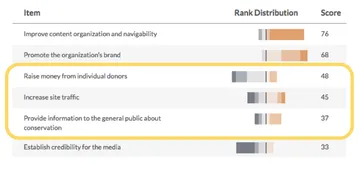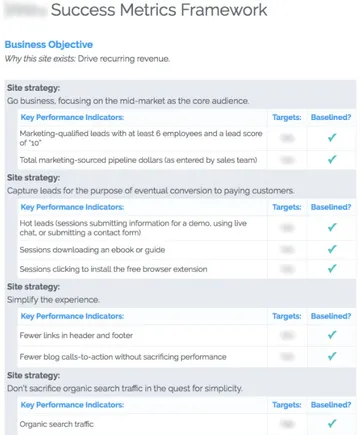A More Data-Informed, Action-Prone Culture

Paul Koch, Former Data & Analytics Director
Article Categories:
Posted on
Three upfront factors must be in place before people can take action on data.
According to SoDA’s recent study, “acting on the data” was the most common data challenge — ahead of “getting the data I need,” “accuracy,” “timeliness,” and “interpreting the data that I have.” If an organization has necessary, accurate, timely, and understandable data, shouldn’t acting on it be the easiest step? And if an agency can’t act on its own data, can it credibly guide clients to do so?
The “actionability” challenge seemingly occurs at the end of the data collection and analysis process, but the underlying issues often happen earlier.
Three upfront factors, described below, must be in place before people can take action on data.
1. Prioritized goals that clarify assumptions
Stakeholder feedback should focus on asking: will this approach best achieve our target outcomes, compared to other possible approaches? Instead, stakeholders’ differing assumptions about goals and priorities often cause conflicting feedback — each person may be solving for a different outcome.
Establishing upfront consensus on project goals — before they’re discussed in the context of a specific deliverable — will set up your team to receive more productive feedback in the future. Ahead of a project kickoff, we survey stakeholders about all known goals: from the RFP, sales discussions, or otherwise. Stakeholders force-rank the goals ahead of the kickoff. We prefer Surveygizmo because it provides results visualizations like this:

Each color represents the number of people who ranked a goal first (dark orange), last (gray), and in-between. As the image shows, even for the highest- and lowest-priority items, people almost never unanimously agree.
When presenting these findings, we use a tool such as Trello to have a live reprioritization discussion. Later, we formalize the Trello board into a document inspired by analytics evangelist Avinash Kaushik’s Digital Marketing and Measurement Model:

Target improvements are based on past experience and assumptions we agree are reasonable. The stakeholder team then approves this framework.
2. Candid upfront conversations about ends, means, and tradeoffs
We encourage upfront conversations about these topics because almost no decision can improve every goal. For example:
- Is total traffic a goal, or a means to another goal? If you could get twice as many signups, but at the expense of half your traffic, would you do it?
- Why improve navigability? Is the goal purely altruistic for the user, or do you expect that improved navigability will drive other goals?
- Why more organic search traffic? If the traffic came from referrals or sharing, would you be equally satisfied? Is new awareness the underlying goal?
3. An “AHA” (ask-hypothesis-action) approach to using the data
There are two types of data:
- indicators that serve as a health-check of the organization
- answers that inform a decision
Indicators, while more common, can’t help people take action. A dashboard number that’s up or down won’t tell stakeholders what to do next. Many people look at data and expect insights to emerge, but in reality, the process must be flipped.
Enter the (kitschy, but hopefully memorable) AHA framework, which uses answers to spur action:
- The ask: What question do you need to answer?
- The hypothesis: What do you think is the answer?
- The action: What will you do if your hypothesis proves true? If false, what will you do differently?
Before setting foot in a data set, one should be able to answer these three questions. They help people analyze in search of an answer, rather than waiting for the answer to reveal itself.
In Summary
With these three factors in place, organizations will be primed to efficiently act on their data. Good luck!
This article was originally published in the SoDA Report on Agency Metrics that Matter.